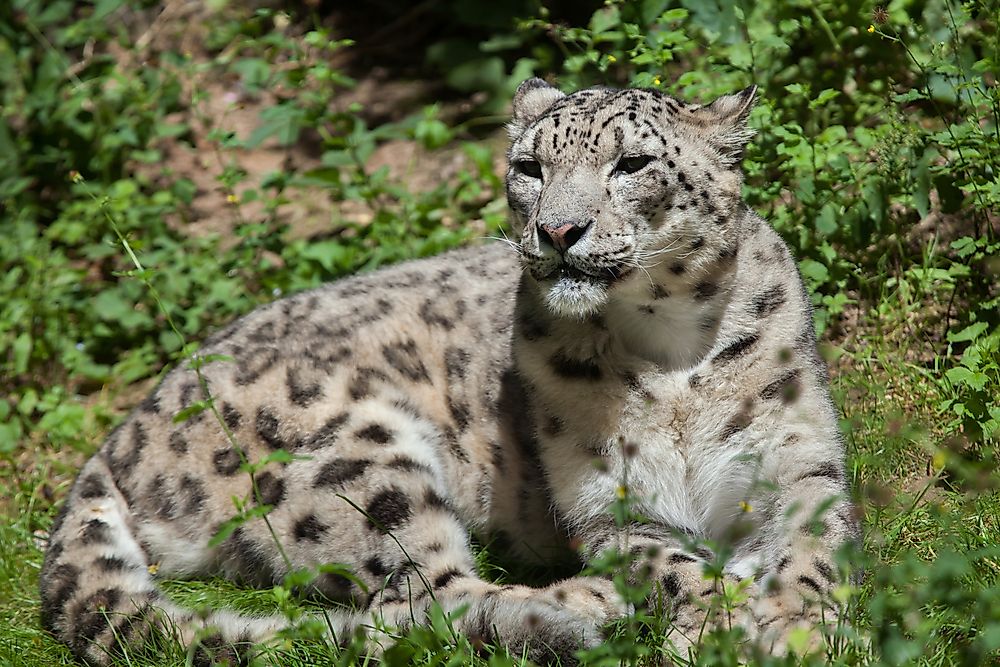Threatened Mammals Of Pakistan

Pakistan is a country with diverse natural beauty, and one of the top tourist destinations in Asia. It is endowed with natural resources including attractive topography and diverse wildlife. The wildlife of Pakistan is made up of thousands of species of flora and fauna. The fauna species is made up of 173 mammalians among other animals and birds. Nine of the mammal species in Pakistan are endangered while 14 are vulnerable and seven species are near-threatened. None of the mammals is critically endangered according to the International Union for the Conservation of Nature (IUCN). Some of the threatened mammals of Pakistan are looked at below.
Pakistan Sand Cat
The Pakistan Sand Cat, Felis margarita scheffeli, belongs to the sand cat subspecies originating from the Nushki Desert in Pakistan. It was listed by IUCN as Near Threatened in 2002 because of its fragmented population characterized by the declining trends. Its name originates from its habitat in the Pakistani sand desert. Pakistan Sand Cat is found in either sandy or stony desert away from water. It is a small cat with a flat wide head, a slender tail approximately 20 to 30 centimeters long, and short legs. Its ears are tawny at the base and are pointed while the eyes are greenish yellow and ringed with white. Pakistan Sand Cat has a thick, pale sandy fur with a blackish bar on the limbs. They live in burrows while their primary preys include the small rodents, reptiles, and birds.
Himalayan Brown Bear
The Himalayan brown bear, scientifically called Ursus arctos isabellinus, is the largest mammal in the Himalayan region. It is also found in India, Nepal, Afghanistan, Tibet, and Bhutan, where they are speculated to be extinct. The male Himalayan brown bear ranges from 1.5 to 2.2 meters long while the female is between 1.37 and 1.83 meters long. It is sandy or reddish-brown in color. Himalayan brown bear is omnivorous and feeds on grass, insects, small mammals and roots. It also preys on large mammals like goats and sheep. It goes into hibernation in caves or dens during winter. The bear is considered Critically Endangered with the government of Pakistan has prohibited its international trade. It is poached mainly for its fur and claws.
Markhor
The Markhor, Capra falconeri, is a species of wild goat found in central Pakistan and the Himalayas. Its name is derived from the Persian words “mar” and “khor”, meaning "snake eater", because of its ability to kill snakes and its corkscrewing horn. The Markhor measures 132 to 186 centimeters in length, and stands 65 to 115 centimeters tall at the shoulders. It has a grizzled light brown to black colored coat which is smoother during summer and grows longer and thicker during winter. The male has a longer hair on the chin, shank, chest, and throat. Markhor inhabits the scrub forest and it is also adapted to the mountainous regions. It is active in the early morning and late afternoon. The locals believe that the form-like substance which drops out of its mouth as it chews cuds is useful in extracting poison from snakebite.
Threats to Mammals in Pakistan
Humans are the primary causes of most major threats to the mammals of Pakistan through their various activities. Deforestation and clearing of land for agriculture and human settlement leads to habitat loss for these mammals exposing them to dangers of migrating to unfamiliar habitat. Hunting these mammals for meat, skin, or parts of their bodies has led to a decrease in their numbers in some of their habitats.
Threatened Mammals Of Pakistan
| Threatened Mammals of Pakistan | Scientific Name |
|---|---|
| Pakistan Sand Cat | Felis margarita scheffeli |
| Himalayan Brown Bear | Ursus arctos isabellinus |
| Markhor | Capra falconeri |
| Hotson's Mouse-Like Hamster Woolly Flying Squirrel | Calomyscus hotsoni Eupetaurus cinereus |
| Indus River Dolphin | Platanista minor minor |
| Persian Leopard | Panthera pardus ciscaucasica |
| Snow Leopard | Uncia uncia |
| Indian Wolf | Canis lupus pallipes |
| Tien Shan Dhole | Cuon alpinus hesperius |
| Indian Hog Deer | Hyelaphus porcinus |











